Stone has always been a cost-effective hardscape material for all garden styles. In gravel form it has been used in landscapes from the raked Zen gardens of Japan to the driveways of English landscape gardens, and it is still used as an affordable and easy-to-install surface in contemporary gardens. Its larger relations, the pebbles, cobbles and paddle stones, have become a much more interesting and useful material in our gardens, as they have so many applications.
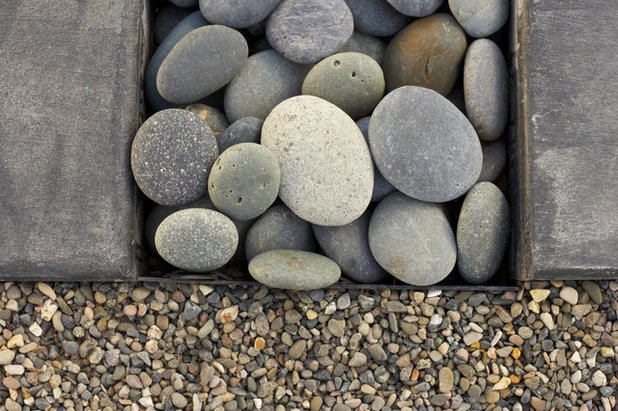
Jeffrey Gordon Smith Landscape Architecture
The naming of these rounded rocks depends on their sizing. Pebbles are generally thought of as being the smallest, with a diameter of less than 2½ inches (almost 6½ centimeters); boulders as the largest, at more than 10 inches (64 centimeters) across; and cobbles as in the middle, being 2½ inches to 10 inches (6 to 64 centimeters) in diameter. Paddle stones are the size of cobbles but have a more flattened shape.
The rounded shape of these useful garden stones results from their particles’ being constantly worn down by the action of the sea or the water in rivers or lakes. Here’s how to use the stones in the landscape.
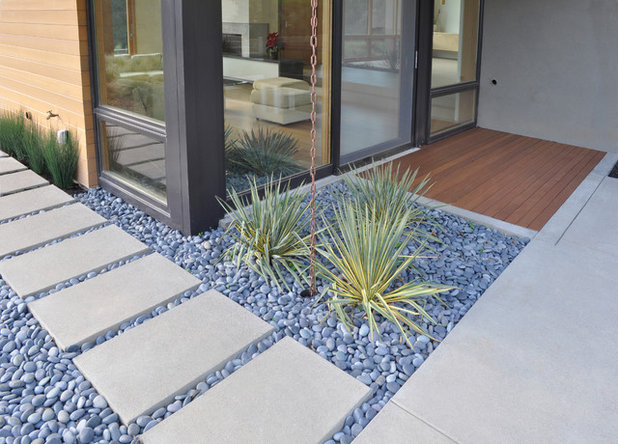
Huettl Landscape Architecture
Ground cover. Low-maintenance gardens have become a priority for many of us, and garden designers are looking for interesting materials to replace lawns and borders that can fit the bill: low cost, easily installed and maintenance free.
Pebbles and cobbles can be used as a low-maintenance ground cover in both traditional and contemporary gardens. The stones in this garden add texture to the design and contrast against the smooth concrete paving, while also providing a permeable mulch for the planting.
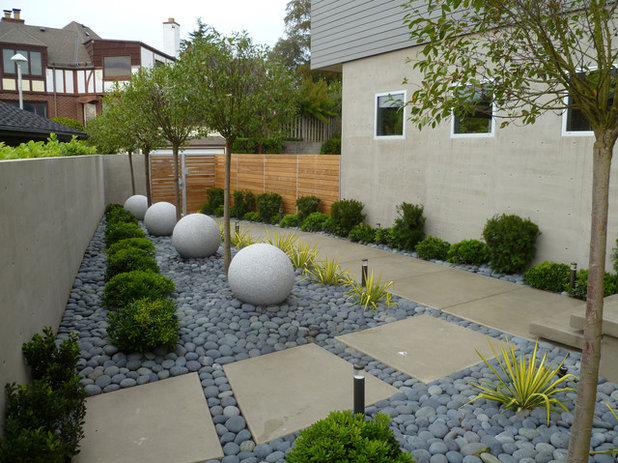
Folia Horticultural + Design
In this garden river stones of all the same size create a clean ground cover, especially where there is little need for pedestrian access.
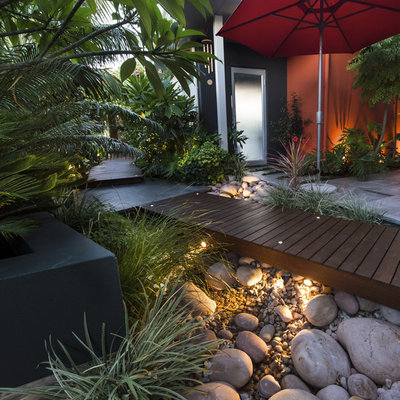
Cultivart Landscape Design
Dry creek beds. The stylized dry riverbed flowing under this deck walkway includes rounded stones of various sizes — from pebbles to boulders. Plants among the stones not only help create the natural feel required but also help soften the expanse of stones.
See how to create a realistic dry creek bed
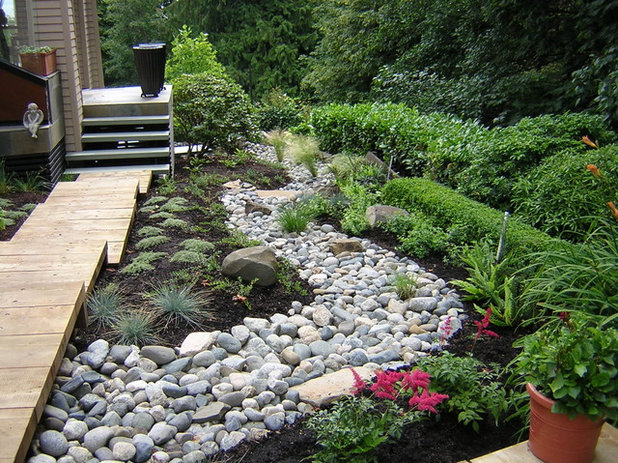
Garden Culture Victoria
Here we see how a sweeping run of mixed pebbles and cobbles creates a very realistic copy of a dry creek bed in an informal contemporary garden.
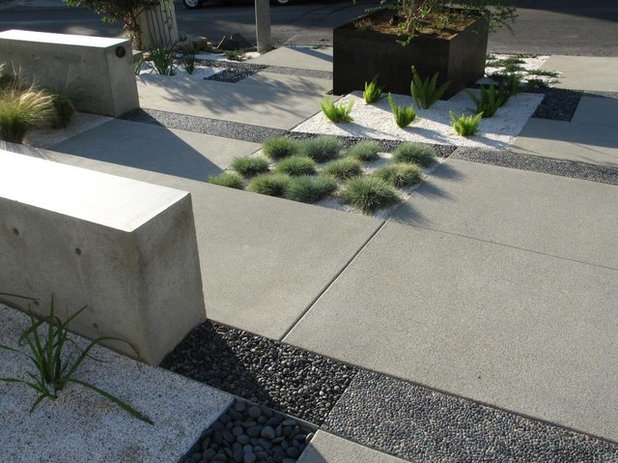
Grounded - Richard Risner RLA, ASLA
Mixed paving. The wide range of sizes and colors allows us to mix and match types within a design, providing great contrast between the differing surfaces. The mixture of stones here not only includes rectangles of gravel and pebbles between the pavers but also pebbles set within concrete, but with their surface exposed. This is achieved by allowing the concrete and pebble mixture to almost set and then washing off the top surface to expose the top layer of pebbles.
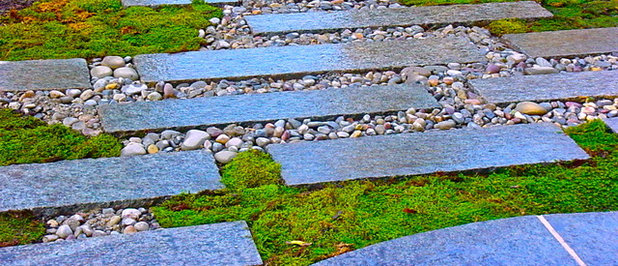
Liquidscapes
Using texture in gardens is one of a designer’s valuable tools, and pebbles and cobbles can provide it in even the simplest of designs.The solid granite stepping stones here contrast so well against both the river cobbles and soft mounds of moss.
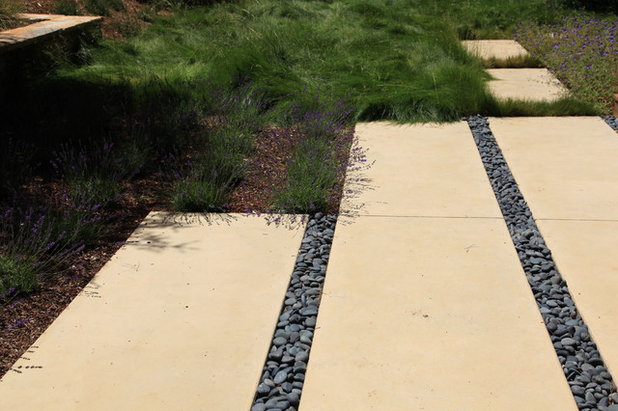
The Garden Route Company
Mulch. Plants can grow through rocks and pebbles, not only giving a natural feel to the design but also forming a useful inorganic mulch. The planting around these cast concrete pavers and bands of black La Paz cobbles includes both native plants and lavender.
It is always beneficial to lay cobbles and pebbles on a weed-barrier fabric that will prevent the ingress of weeds yet be permeable enough to allow water to drain through.
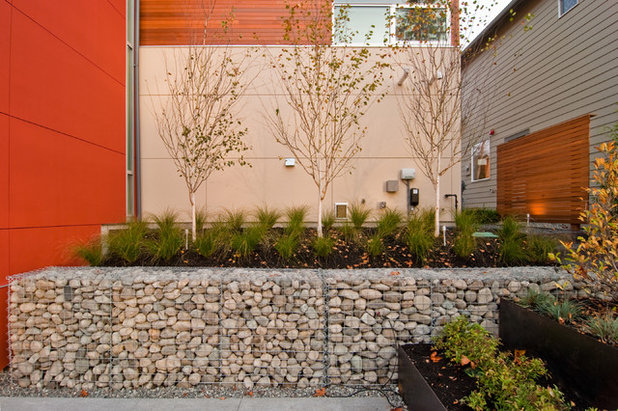
BUILD LLC
Gabion walls. Pebbles and cobbles are often used as an infill for gabions (wire cages that are filled with stone to create a solid block), where their ease of handling and attractive appearance make them an obvious choice. The gabions here have been used to create a simple yet attractive retaining wall.
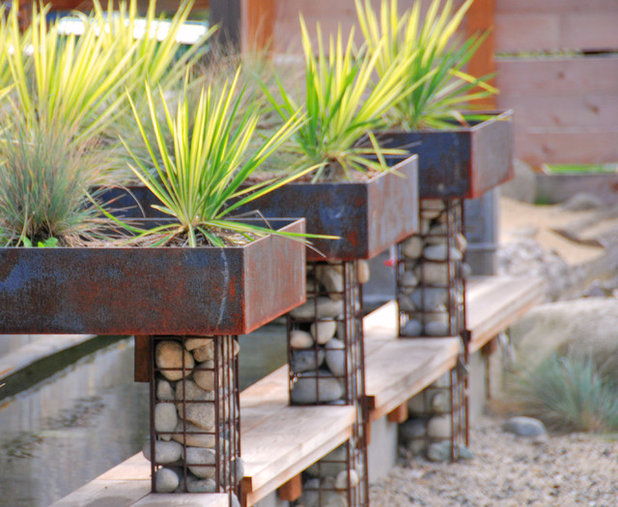
Exteriorscapes llc
The same idea of the gabions has been used here to create stone-filled wire columns that are supporting dry, planted rills. The mixed gray tones of the cobbles used blend well with the rusted steel of the rill and wire mesh.
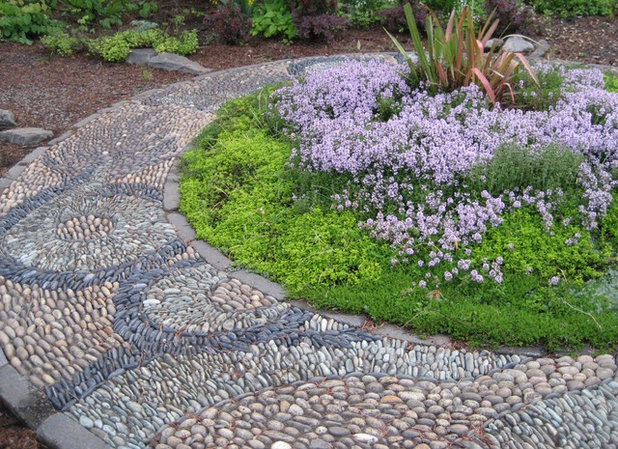
Seasons Garden Design LLC
Decorative pathways. For centuries cobbles and pebbles have been used to create hard-wearing paths. Stones in the past were laid on a clay or hoggin base, while today they are set on a hard core and secured with concrete.
The simplest paths can be constructed using random-size cobbles, while more decorative paths have cobbles that are sorted by size and type. The most intricate paths, such as the one seen here, include mosaic patterns using different sizes and colors of stones. Though beautiful to look at, cobble pathways are not always the easiest to walk along, and in some cases cobbles are used to create a deterrent surface (the cobbles are left raised above the retaining concrete).
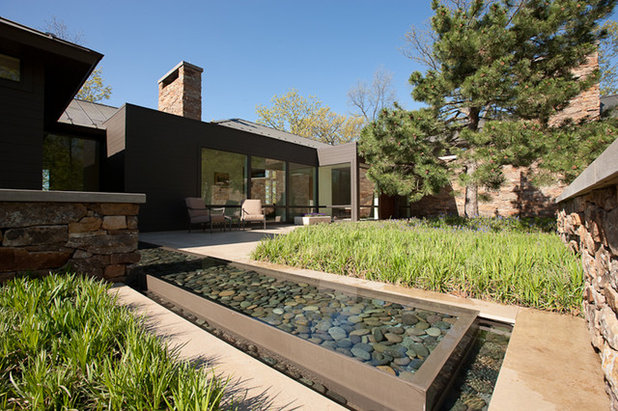
Rugo/ Raff Ltd. Architects
Water features. The true depth of a stone’s color shines through when the stone is wet, making cobbles, pebbles and paddle stones beautiful choices in water features. Paddle stones are perfect for lining pools and streams, as their flat surfaces create natural mosaics of neutral colors.
Gardens Tap Into Rill Water Features
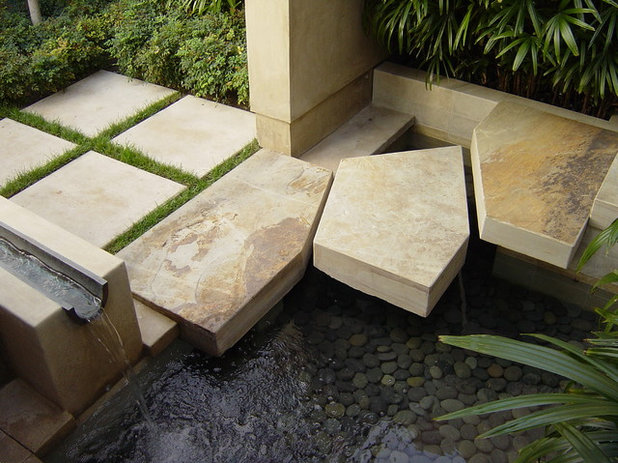
Integration Design Studio, Landscape Architects
As we saw with using cobbles and pebbles in mixed-media flooring, the cobbles used as the base of this water feature give added texture to the scheme.
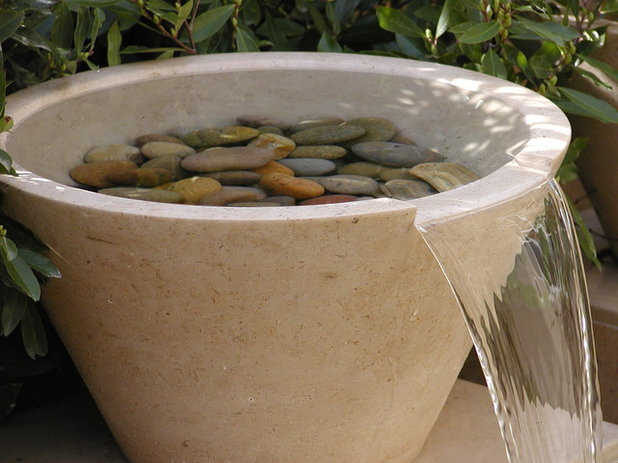
AMS Landscape Design Studios, Inc.
Even in the smallest water feature, pebbles and cobbles add interest.
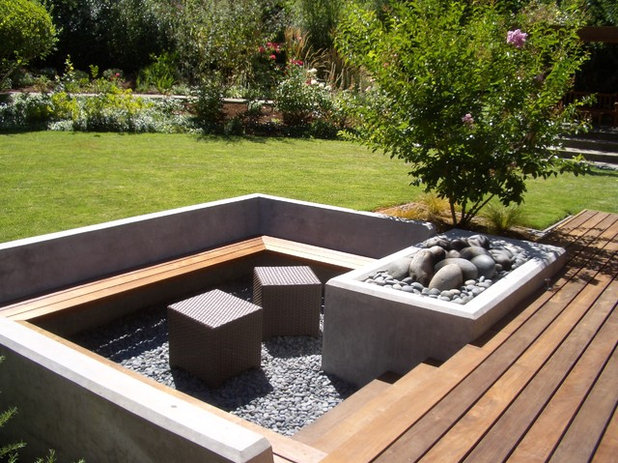 Fire features.
Fire features. Cobbles and pebbles have found the perfect home in this sunken seating area and fire pit. Natural gray pebbles are the perfect material to cover the floor with, while the cobbles surrounding the small boulders make a great surface for the raised fire pit.
More:15 Great Ideas for a Lawn-Free Yard
5 Gravel and Stone Types for a Rockin’ Landscape





